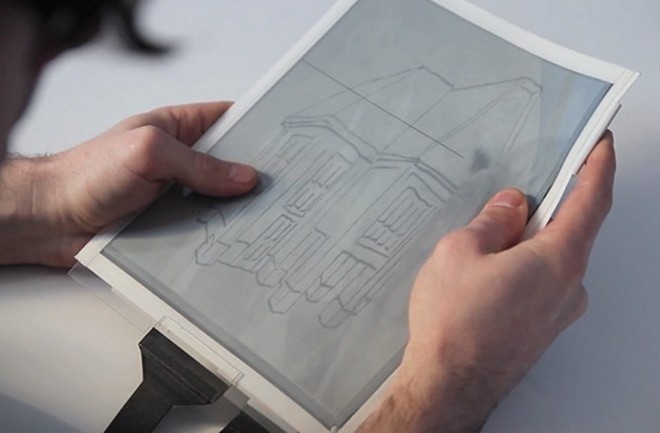Do you like this article?
Following the trend in tech for lighter and thinner devices, a new
tablet, the Paper Tab, may have taken the trend to the next level. As
its name suggests, this new tablet has the look and flexibility of a sheet of paper. However, the PaperTab, developed by Plastic Logic,
a company founded by researchers from Cambridge University, and in
partnership with Intel and the Human Media Lab, is no ordinary sheet of
paper. It boasts an interactive touchscreen, high-resolution display,
and an Intel Core i5 Processor.
Perhaps the most unique trait about the PaperTab is the way the
user interacts with the device. Rather than one single display with
several apps or windows, as with most tablet devices currently in
production, the PaperTab provides 10 or more interactive displays, or Paper Tabs. Each PaperTab displays one open application.
Additionally, multiple PaperTabs can be placed side by side, in order
to create a larger display surface. As part of the interactive design
feature, the PaperTabs track their location relative to the user and to
one another, and intuitively respond. When touched by the user, the
PaperTab displays a full screen page view, but if placed out of the zone
of the user, the PaperTab will revert to an app, or thumbnail view of a
document.
The PaperTab is designed to respond intuitively to human behavior.
Users can attach files, send emails, and navigate through pages of
documents using hand gestures, such as bending the top corner of the
display. The feel is similar to how one would naturally handle paper,
as when reading a magazine.
For example, if a user wants to send a photo, the user can tap one paper
tab showing the photo, to another PaperTab with a draft email, thereby
attaching the photo. The email can then be sent simply by bending the
top corner of the display. With both the familiarity and flexibility
of paper, the PaperTab may be a breakthrough product in mobile computing
devices.







